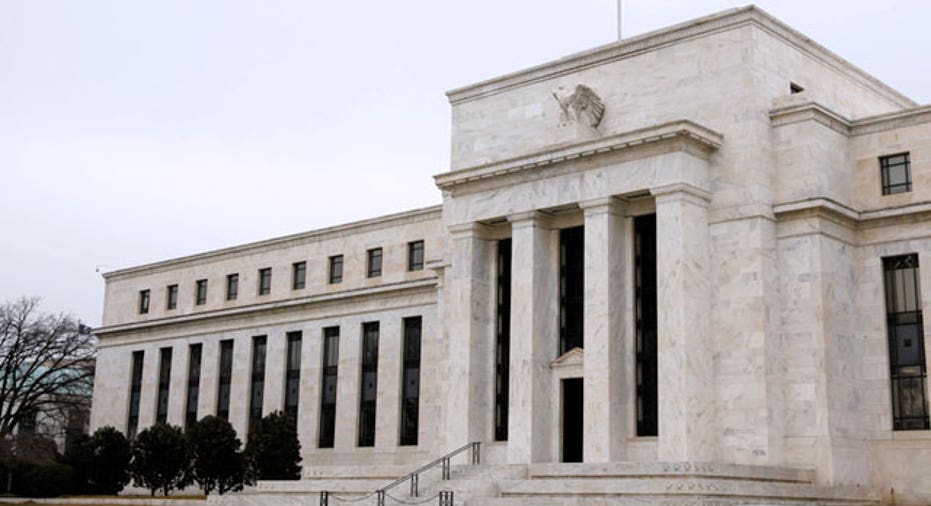Federal Reserve Starting to Look Like Congress

If these folks dont know what to do, who does?
Its clear from the minutes of the Federal Reserves August 9 meeting that pretty much the only thing on which the 10 members of the all-important Federal Open Market Committee agree is that the economy is rapidly getting worse.
In the 10 pages of notes released yesterday, there are just a handful of sentences that indicate any sort of pervasive harmony among the members. Heres one: Participants noted a deterioration in labor market conditions, slower household spending, a drop in consumer and business confidence and continued weakness in the housing sector.
But beyond those fairly obvious and depressing points there is little common ground regarding any long or short-term strategies for preventing the U.S. from slipping back into recession.
The existence of a rift between Fed Chairman Ben Bernanke and a handful of regional Fed presidents was well-known long before the release of the Aug. 9 minutes. But the rift appears to have grown much wider as the economic recovery has all but stalled over the summer.
In other words, as the economic problems facing the U.S. have gotten worse in recent months the small group of powerful people charged with coming up with solutions are more divided than ever.
At the Aug. 9 meeting the FOMC agreed to maintain interest rates at exceptionally low levels through mid-2013.
It was an extraordinary announcement for two reasons. First because the Fed so clearly articulated a monetary policy moving forward. (The Fed has historically operated with almost mythical secrecy). Second because three members of the committee -- identified as Richard Fisher, president of the Dallas Fed, Charles Plosser of Philadelphia and Narayana Kocherlakota of the Minneapolis Fed -- dissented from that policy.
Its hardly a secret that a handful of FOMC members have grown skeptical of the easy money policies advocated by Bernanke and the rest of the majority. Those policies have included two-and-a-half years of interest rates at a record-low range of 0% to 0.25%, and artificially pumping cash into financial markets through the purchase of U.S. Treasuries, a strategy known as quantitative easing.
The skeptics, inside and outside the Fed, say these programs havent worked and are in fact harmful because they raise the risk of inflation. These dissenters have loudly questioned not only whether the Fed has any additional weapons, but whether those weapons can have any genuine impact.
Then we learned yesterday that the dissent among the two Fed factions is even more fractious than previously revealed.
While the dissenters were reluctant to impose any news measures on an already fragile economy, another group of FOMC members, who have so far not been identified, supported even stronger medicine than merely extending low interest rates for another two years.
Its not clear exactly what this activist group wanted to do, but they were apparently so shaken by the relentless drone of lousy economic news that, for them at least, doing nothing was not an option.
Eventually, the 10 members reached a compromise that in effect did nothing while doing something. The compromise came apparently only after strenuous debate between the two factions.
The dissenters wanted to tie low interest rates to key data figures such as unemployment or inflation rates. That would have meant if the jobless rate fell or inflation rose to a certain point interest rates would have risen accordingly. That idea was scrapped in favor of a non-conditional extension of low rates.
The easy money proponents are believed to be leaning in favor of another round of quantitative easing, but thats not going to happen without a bitter political fight not only in a deeply divided Congress but also among an increasingly frustrated electorate. Scaling down public debt and tightening the reins on government spending have emerged as perhaps the two leading issues heading into next years presidential and congressional elections.
The widening rift among FOMC members is eerily reminiscent of the deep divide in Congress, a split that allowed the U.S. to twist in the wind while disparate groups of politicians fought for their individual visions of future government spending.
Months of stalling and partisan bickering ahead of an Aug. 2 deadline for raising the U.S. debt limit led directly to Standard & Poors historic decision to cut the U.S. credit rating. That decision damaged the U.S. reputation in the global marketplace and led to two chaotic weeks of trading on Wall Street.
Its not clear yet what if any impact the divide among FOMC members may have on the wallets and pocketbooks of average Americans. And a healthy debate is never a bad thing. But ideological gridlock is, whether it happens on Capitol Hill or at the Federal Reserve building across town.
Maybe its time to acknowledge a hard truth. If 10 of the (ostensibly) smartest economic minds in the U.S. are at a loss over how to fix whats ailing the economy perhaps there is no easy, quick-fix solution.
Since its not going to happen in Congress, we can only hope the 10 members of the FOMC can overcome ideological differences and eventually agree on some effective long-term measures for pulling the U.S. economy out of its doldrums.